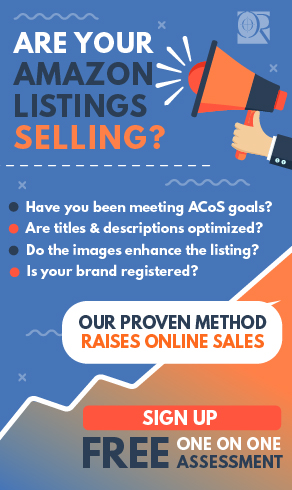
Amazon has once again reshaped its approach to shipping with the introduction of the “Low-Price FBA” program. This program aims to replace the former “Small and Light” FBA program, offering a more streamlined shopping experience for customers while potentially boosting the earnings of third-party sellers. To grasp the full extent of this transformation, let’s dive into its intricacies and understand the paradigm shift it represents.
Table of Contents
- Background: The Genesis of Small and Light
- The Essence of Low-Price FBA
- How to Adapt to Amazon’s Low-Price FBA Program: A Guide for Sellers
- What are the pros and cons of Low-Price FBA?
- Low-Price FBA Fact List
- Compare Low-Price vs. Small & Light vs. Standard FBA Fees
- What is Low-Price FBA and how is it different from Small and Light?
- How to qualify for Low-Price FBA
- The pros and cons of Low-Price FBA vs. Small and Light
- What do you need to know about this transition?
Background: The Genesis of Small and Light
Before we dissect the intricacies of the new program, it’s essential to contextualize its predecessor, the “Small and Light” program. Amazon introduced it to meet the growing demand for affordable, lightweight products, particularly those priced under $12. By offering reduced fulfillment fees for these items, Amazon aimed to incentivize sellers to list more such products. However, there was a trade-off: a slower shipping speed compared to standard FBA, potentially impacting customer satisfaction due to extended delivery times.
The Essence of Low-Price FBA
At its core, the Low-Price FBA program symbolizes Amazon’s effort to align the fulfillment of low-cost products with its standard practices. Products under this new program, priced below a specified threshold (e.g., $10 in the US), will benefit from swift delivery, akin to standard FBA. This move seeks to merge the best of both worlds: affordability for sellers and fast delivery for consumers.
How to Adapt to Amazon’s Low-Price FBA Program: A Guide for Sellers
Amazon recently unveiled a significant change that will impact sellers offering low-cost products meeting specific size and weight criteria. The company is phasing out its Small and Light FBA program and introducing the new Low-Price FBA program across all regions. In this article, we will provide you with a comprehensive understanding of this transition and guide you through the steps to adapt to the Low-Price FBA program. If you’re an Amazon seller, especially in the US, this is critical information you need to be aware of.
What are the pros and cons of Low-Price FBA?
Pros:
- Improved Margins: Low-Price FBA can enhance your profit margins and competitiveness on low-cost products.
- Faster Shipping: Products under this program will enjoy the same fast delivery as standard FBA, making them eligible for Prime benefits.
- Lower Fulfillment Costs: Low-Price FBA fees are lower than standard FBA fees, helping you save on fulfillment expenses.
Cons:
- Lower Price Threshold: The price threshold for eligibility is $2 lower in the US marketplace compared to Small & Light, which might affect certain products.
- Reduced Fulfillment Discount: On average, the fulfillment discount is lower than Small and Light, potentially increasing costs for some products.
Low-Price FBA Fact List
- The Small and Light (S&L) FBA Fulfillment discount program is being replaced by Low-Price FBA.
- Small and Light rates will continue to apply until the program expires on August 29, 2023, in the US and September 26, 2023, for EU marketplaces.
- Enrollment for new Small and Light products will end after July 17th, 2023, in the US and September 14, 2023, for EU.
- Low-Price FBA applies automatically to all items priced below specific thresholds, which vary by marketplace.
- Low-Price FBA will utilize standard FBA fulfillment centers and shipping speeds.
- Eligibility for Low-Price FBA is automatic and won’t be subject to 2023 holiday peak fulfillment fees.
- Low-Price FBA rates will be an average of $0.77 lower per item than the current FBA rates for these products in the US.
Compare Low-Price vs. Small & Light vs. Standard FBA Fees
- In the US marketplace, Low-Price FBA rates feature significantly reduced fulfillment fees, offering a $0.77 savings across the board compared to Standard FBA.
- When comparing Low-Price FBA fees to Small & Light, results vary. Standard size tiers see an average cost increase of $0.22 using Low-Price FBA.
- Large standard size tiers between 4oz – 12oz face the most significant disadvantage with Low-Price FBA compared to Small & Light, incurring a cost increase of up to $0.54.
What is Low-Price FBA and how is it different from Small and Light?
Low-Price FBA is Amazon’s program tailored for sellers offering low-cost products that meet specific size and weight criteria. It supersedes the Small and Light FBA program and is available in all Amazon marketplaces. Here are the key differences:
- Price Threshold: Low-Price FBA boasts a lower price threshold compared to Small and Light. Products must be priced below specific thresholds to qualify.
- Fulfillment Centers: Unlike Small and Light, which utilized dedicated fulfillment centers, Low-Price FBA leverages standard FBA fulfillment centers and shipping speeds.
- Automatic Enrollment: Eligibility for Low-Price FBA is automatic, sparing sellers from the need for manual enrollment.
- Fulfillment Fees: Low-Price FBA offers lower fulfillment fees compared to standard FBA, benefiting sellers with low-cost products.
How to qualify for Low-Price FBA
To qualify for Low-Price FBA, your products must meet the following criteria:
- Price: Your products must be priced below specific thresholds in the respective marketplace, with these thresholds varying by marketplace and category.
- Size and Weight: Products must adhere to the size and weight criteria specified for the Low-Price FBA program, which may also vary by marketplace.
- Eligibility: Your seller account must maintain good standing and adhere to Amazon’s performance and policy requirements.
The pros and cons of Low-Price FBA vs. Small and Light
Pros of Low-Price FBA:
- Improved Margins: Low-Price FBA can enhance your profit margins on low-cost products.
- Faster Shipping: Products under this program will enjoy the same fast delivery as standard FBA, making them eligible for Prime benefits.
- Lower Fulfillment Costs: Low-Price FBA fees are lower than standard FBA fees, helping you save on fulfillment expenses.
Cons of Low-Price FBA:
- Lower Price Threshold: The price threshold for eligibility is $2 lower in the US marketplace compared to Small and Light, which might affect certain products.
- Reduced Fulfillment Discount: On average, the fulfillment discount is lower than Small and Light, potentially increasing costs for some products.
What do you need to know about this transition?
If you’re currently using Small and Light for your low-cost products, it’s important to be aware of the following key points:
- Transition Date: The Small and Light program is set to expire on August 29, 2023, in the US and September 26, 2023, for EU marketplaces. After these dates, you won’t be able to enroll new products in Small and Light.
- Automatic Transition: Existing Small and Light products will automatically transition to the Low-Price FBA program after the program’s expiration date. This transition is automatic, requiring no action on your part.
- Price Thresholds: Be sure to review the price thresholds for Low-Price FBA in your respective marketplace and adjust your product pricing accordingly to maintain eligibility.
- Fulfillment Fee Changes: Be aware of the changes in fulfillment fees under Low-Price FBA. While you may experience cost savings in some cases, it’s crucial to evaluate how these changes will impact your overall profitability.
- Monitor Performance: Continue monitoring your seller account’s performance to ensure you meet Amazon’s requirements for participation in the Low-Price FBA program.
In conclusion, Amazon’s transition from Small and Light to Low-Price FBA marks a significant change for sellers of low-cost products. While there are both advantages and disadvantages to this transition, staying informed, adjusting your pricing and product strategies as needed, and monitoring your performance is key to thriving as an Amazon seller in this evolving landscape.
FBA Strategies
It’s prudent to understand the various offerings within Amazon’s FBA program if you’re a seller on Seller Central. No plan for Amazon FBA yet? It may be time to ask for expert help. The OperationROI team knows Amazon FBA well. They have many ways to help you reach your goals. Contact us today at 1-888-277-5429 or by filling out our contact form to learn more.
Need Help with your FBA Strategy? Contact Us Today! Schedule A Call Today





